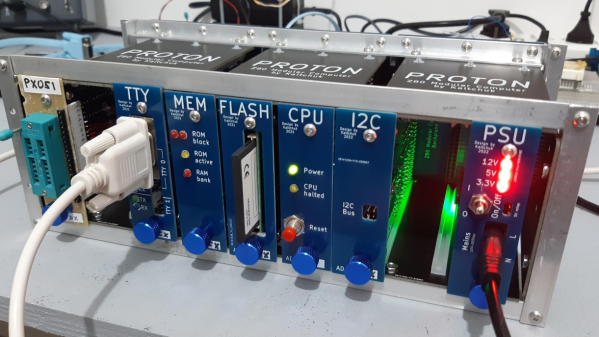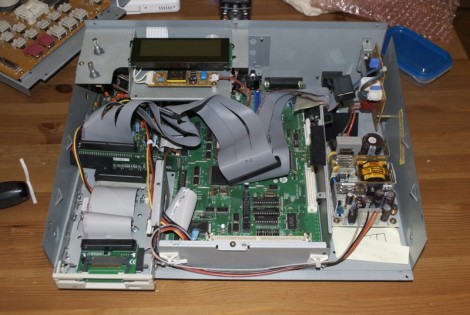Very few retrocomputing projects are anything other than a labor of love. There’s really no practical reason to build a computer that is woefully inadequate for just about any task compared to even an entry-level PC today. But the lack of a practical reason to do something rarely stops a hacker, as with this nifty modular Z80-based rack computer.
Actually, there’s at least one area where retrocomputers excel compared to their modern multi-core gigahertz counterparts — and that’s nostalgia. That’s what [Ricardo Kaltchuk] was going for with his build, which started by finding a Z80 and an Intel 8251 USART in his parts bin. Those formed the core of what would become the “Proton” computer, a modular beauty built around 7 cm by 10 cm PCBs that plug into a backplane inside a rack made from aluminum angle. Aside from the power supply and the Z80 CPU, other modules include a RAM card with a zero insertion force socket for an EPROM, a mass-storage module sporting a 128 MB Compact Flash card, plus modules for standard serial and I2C comms.
The fit and finish are excellent, and the performance is impressive. The Proton runs CP/M and boasts a ton of old applications that will bring back some memories, like SuperCalc and dBase. We’d venture a bet that WordStar is in there someplace, or easily could be. The video below is a little rough, but shows everything off really well.
In some ways, the Proton reminds us of the RC2014, but its fit and finish are what bring this build home. That’s not to take away from the work [Ricardo] obviously put into documentation, though. The 62-page manual has every detail of every module, plus instructions for building one of your own.
Continue reading “Modular Z80 Really Racks Up The Retrocomputer Cred”














